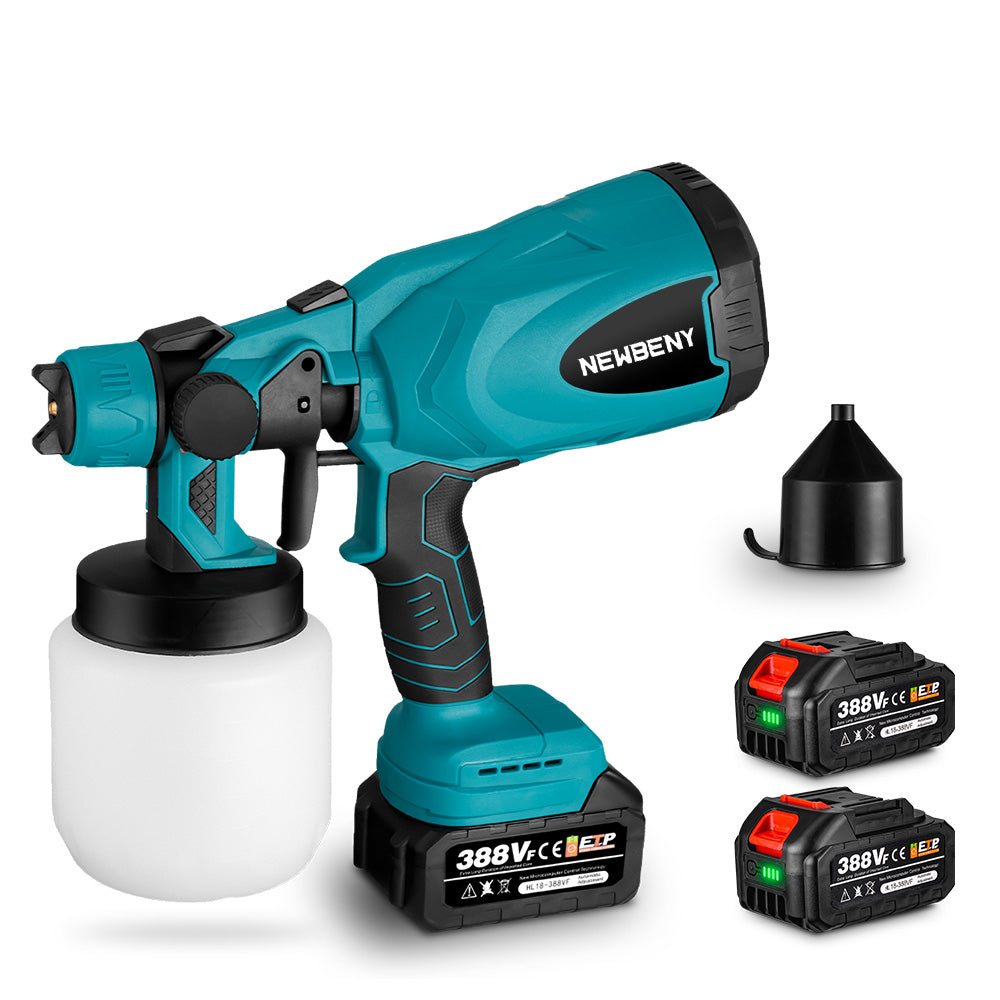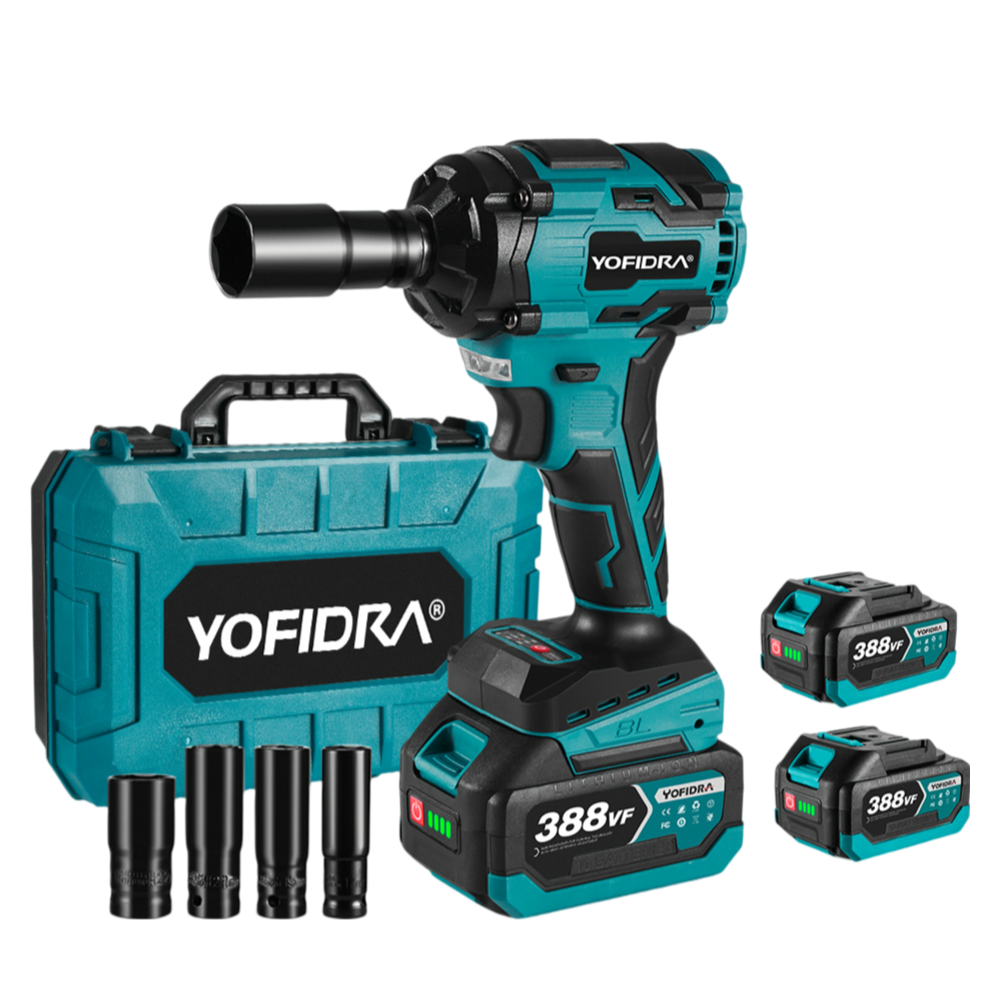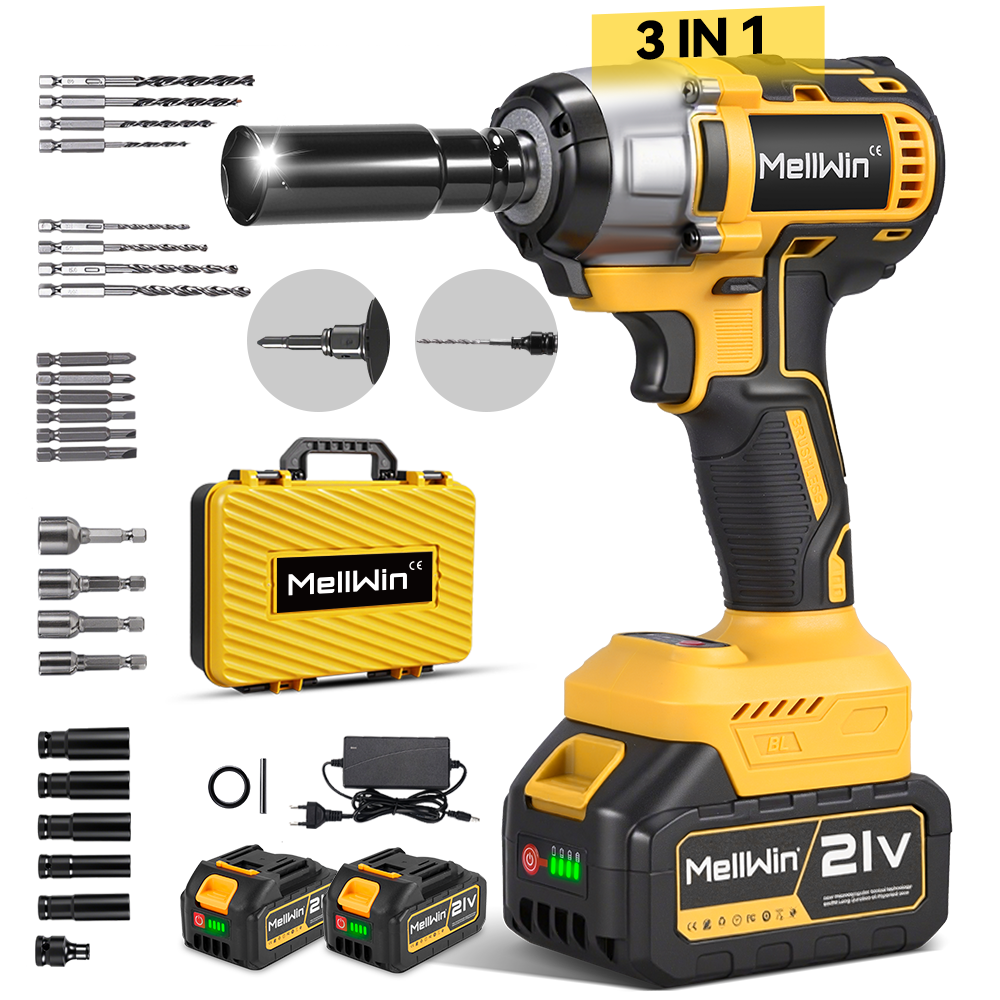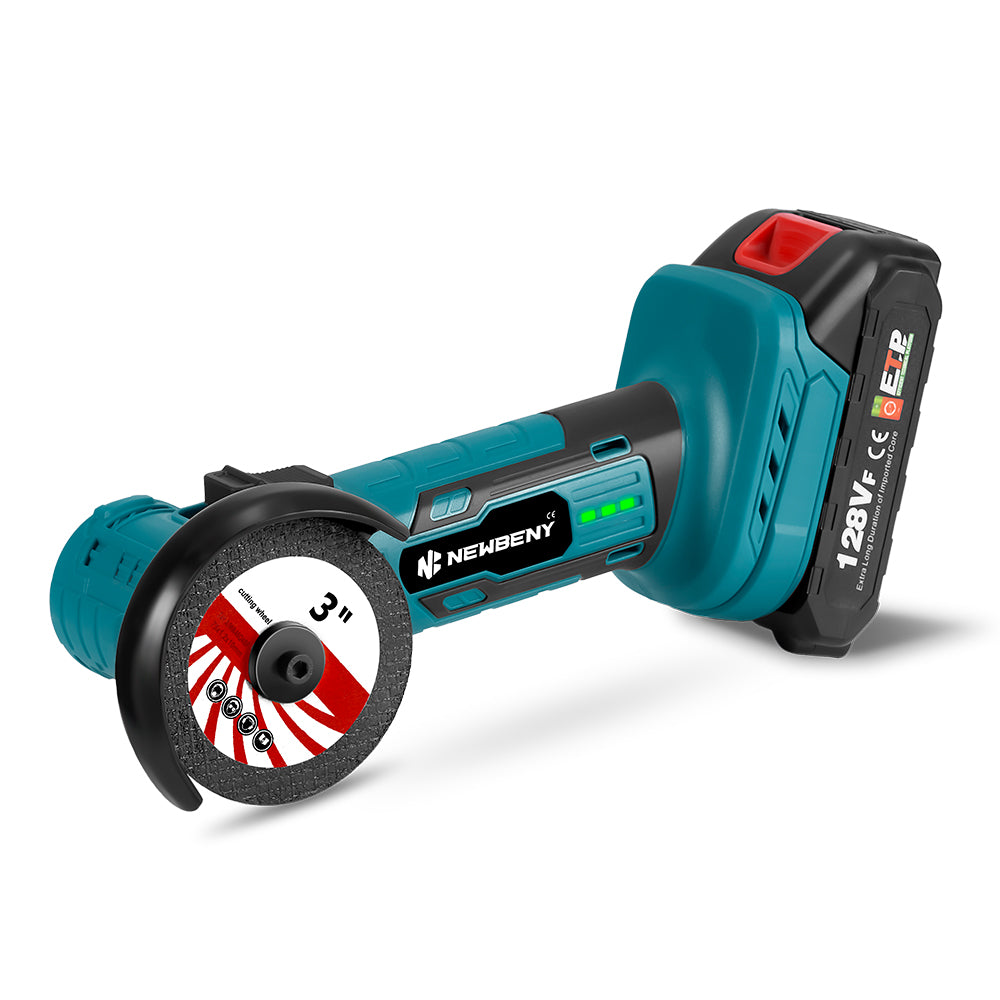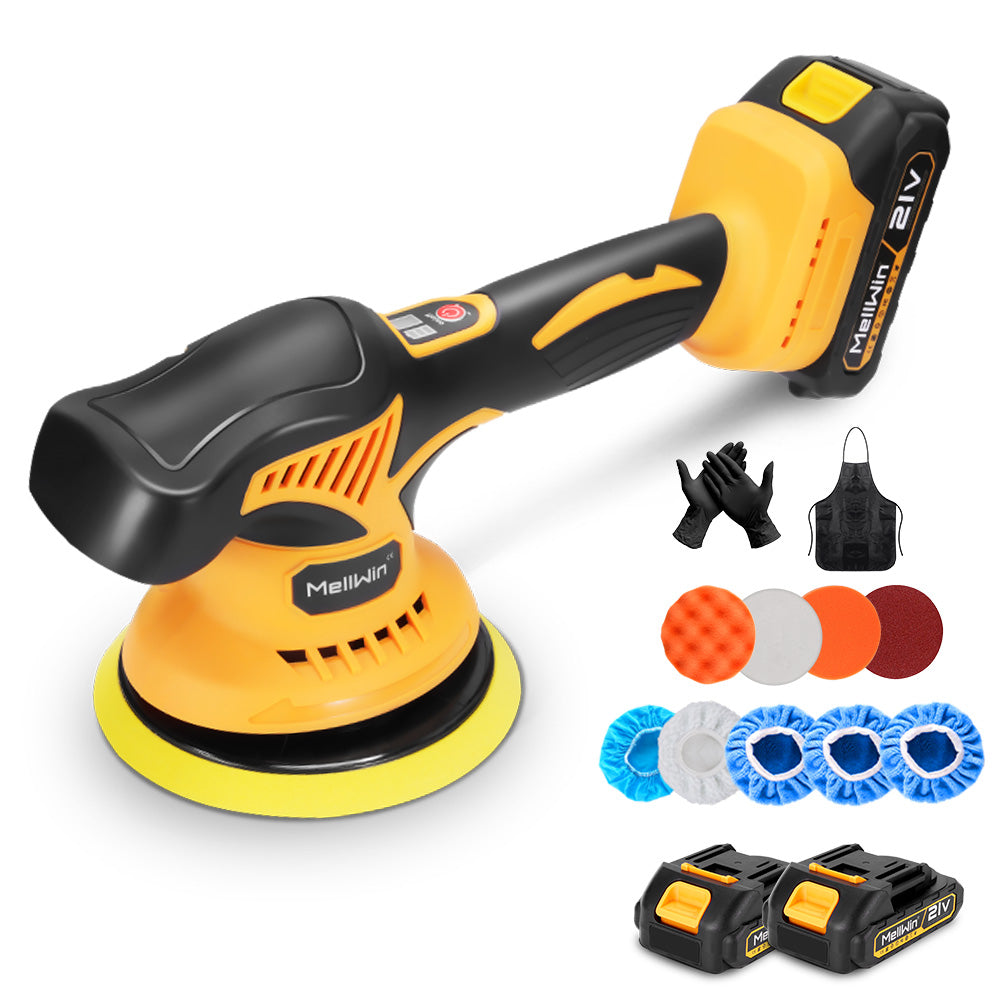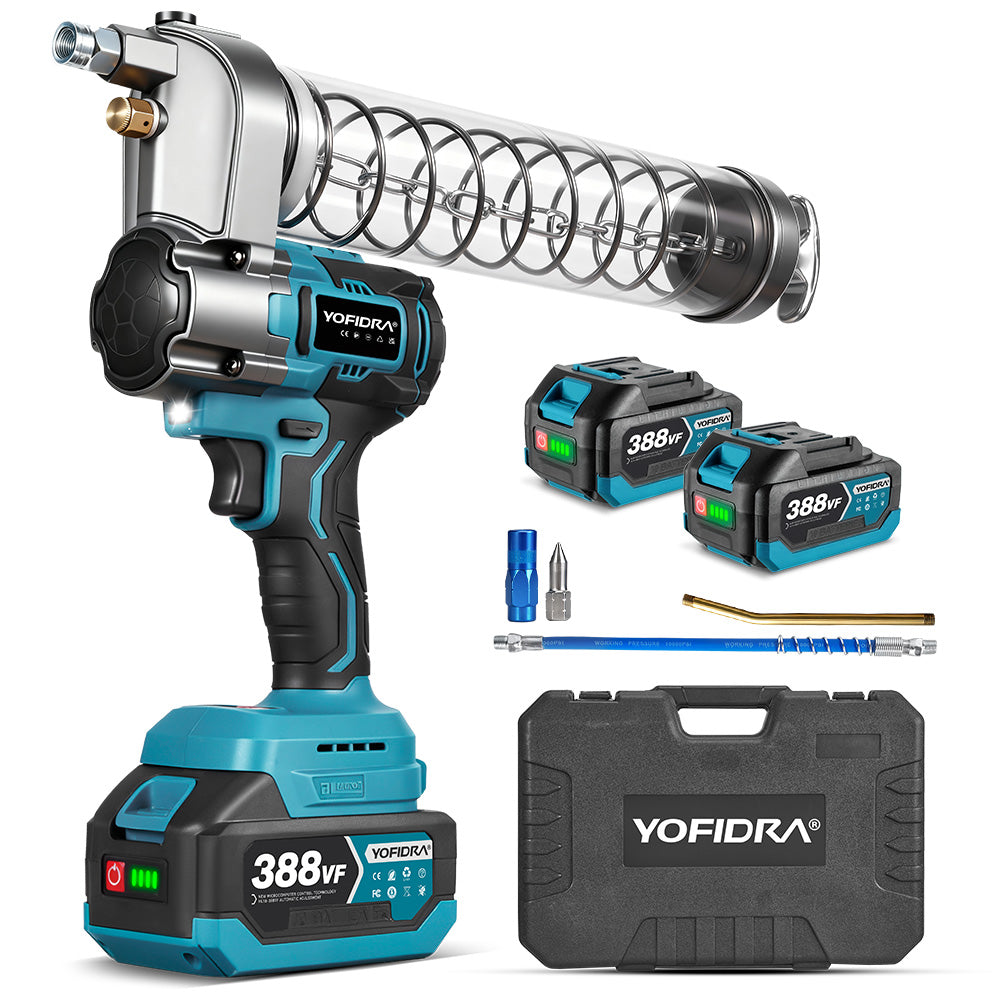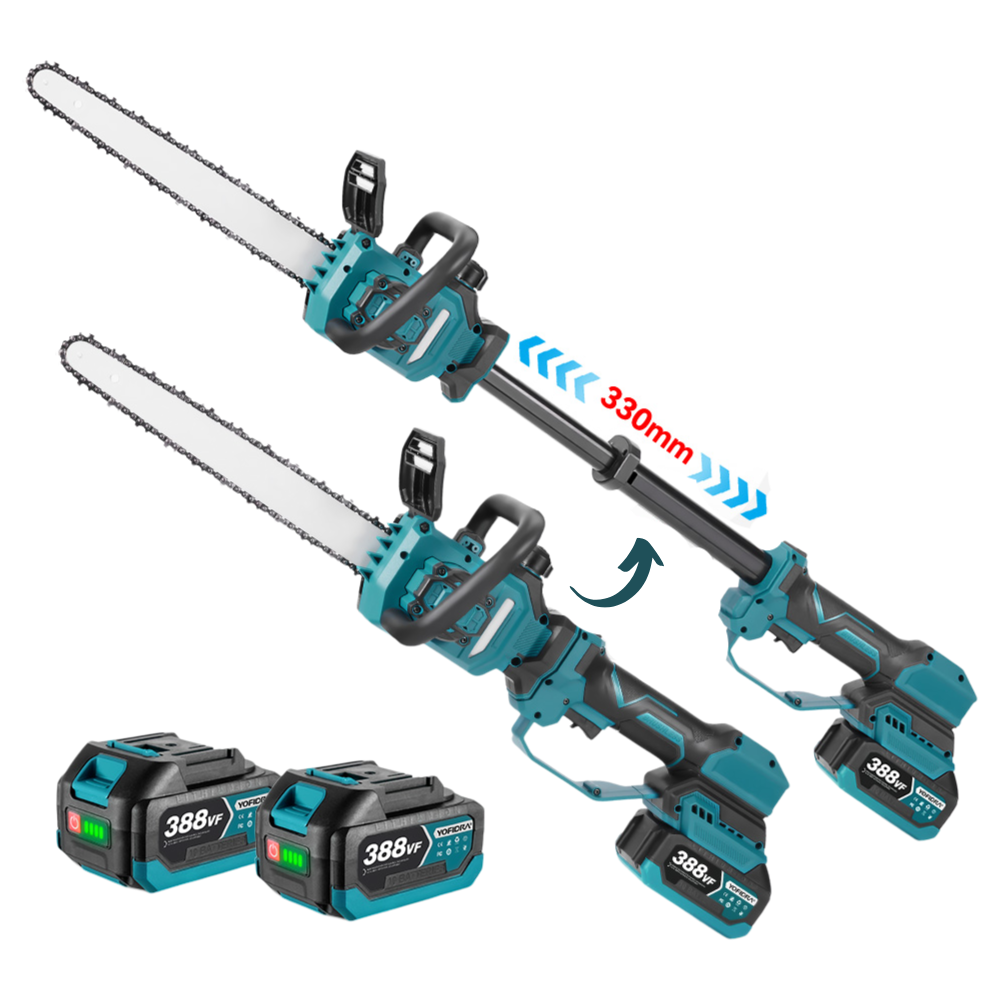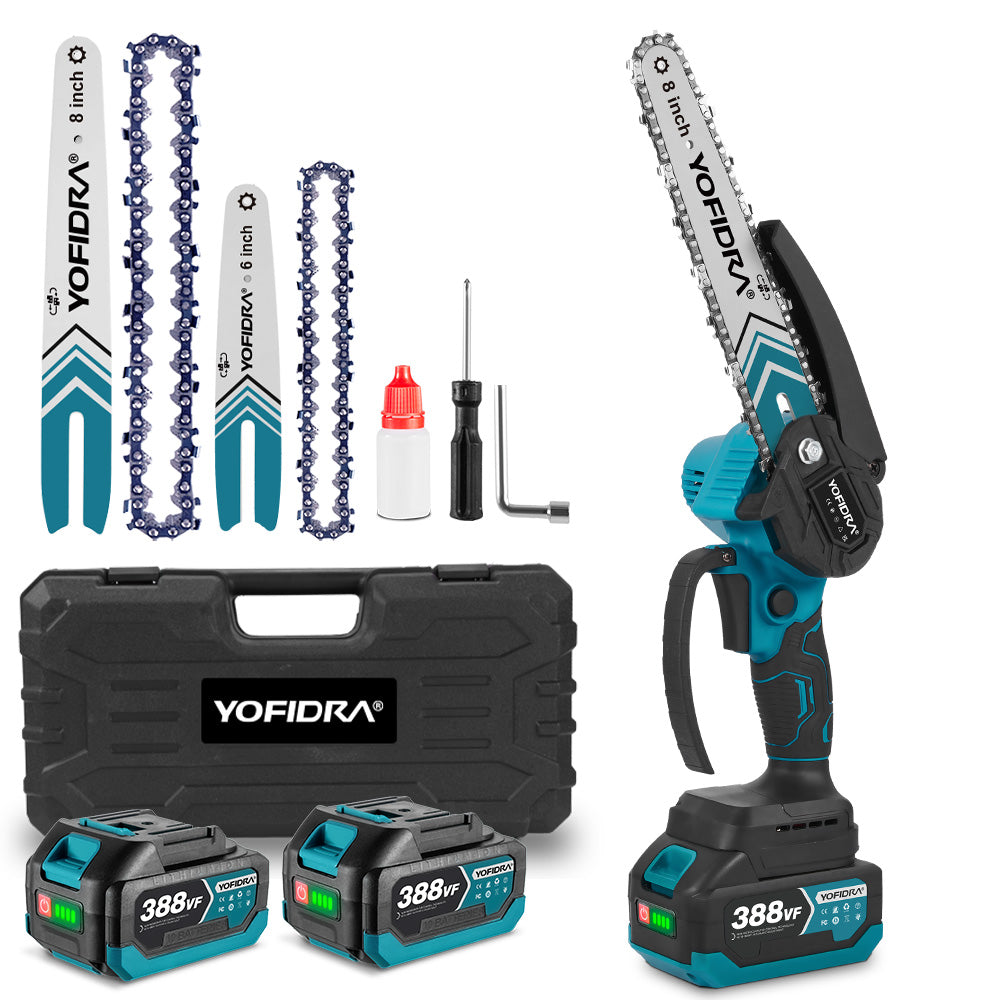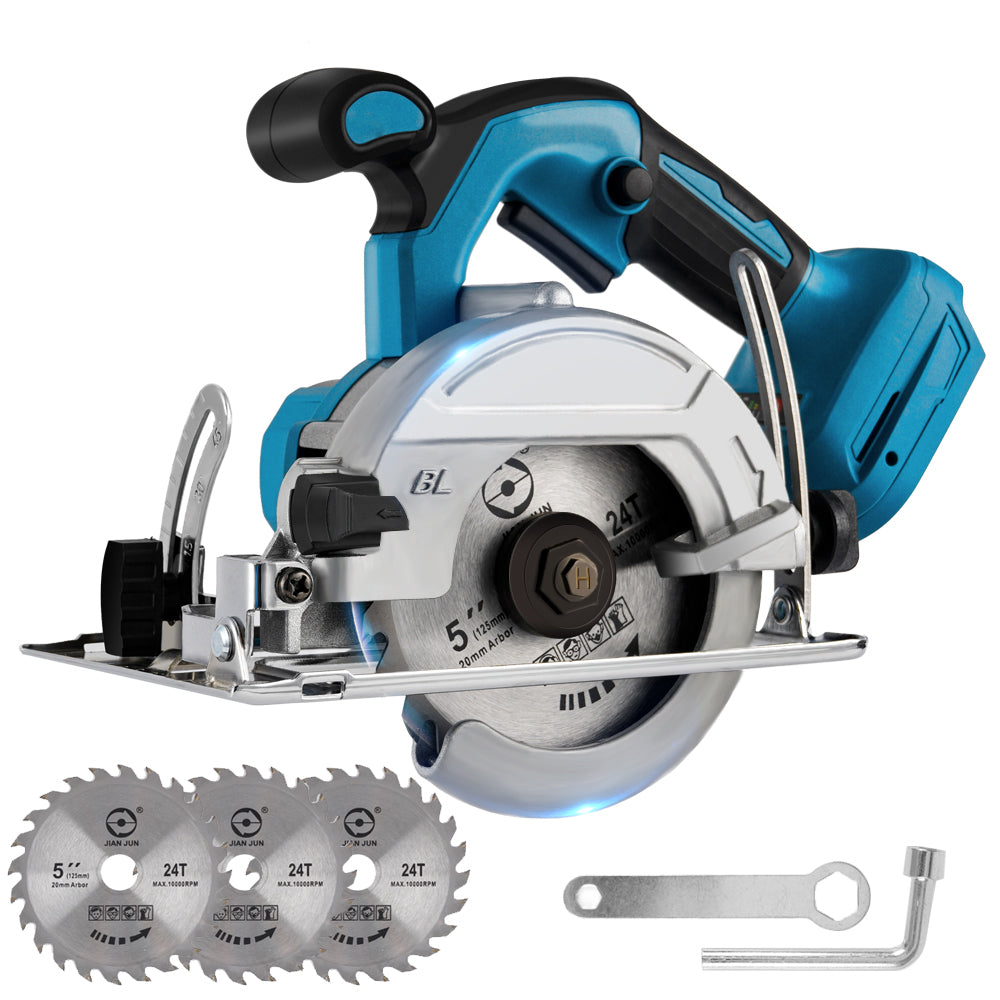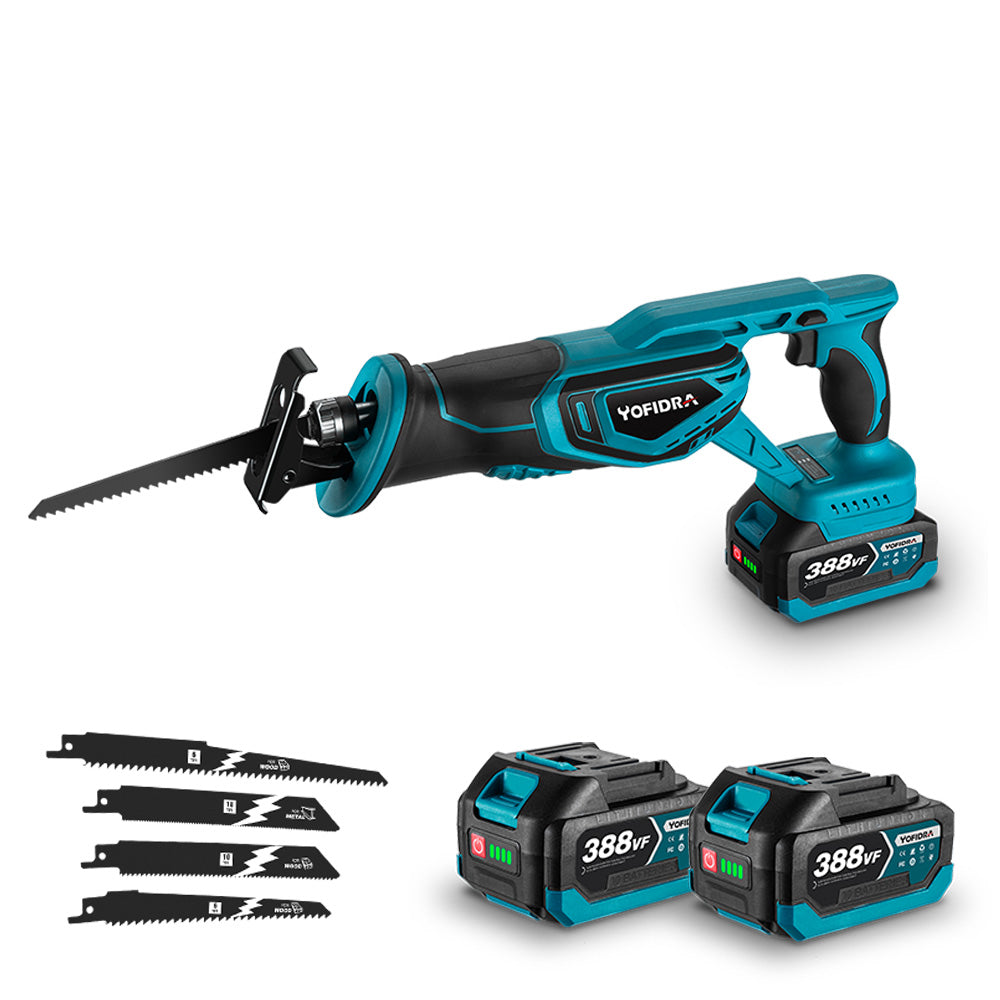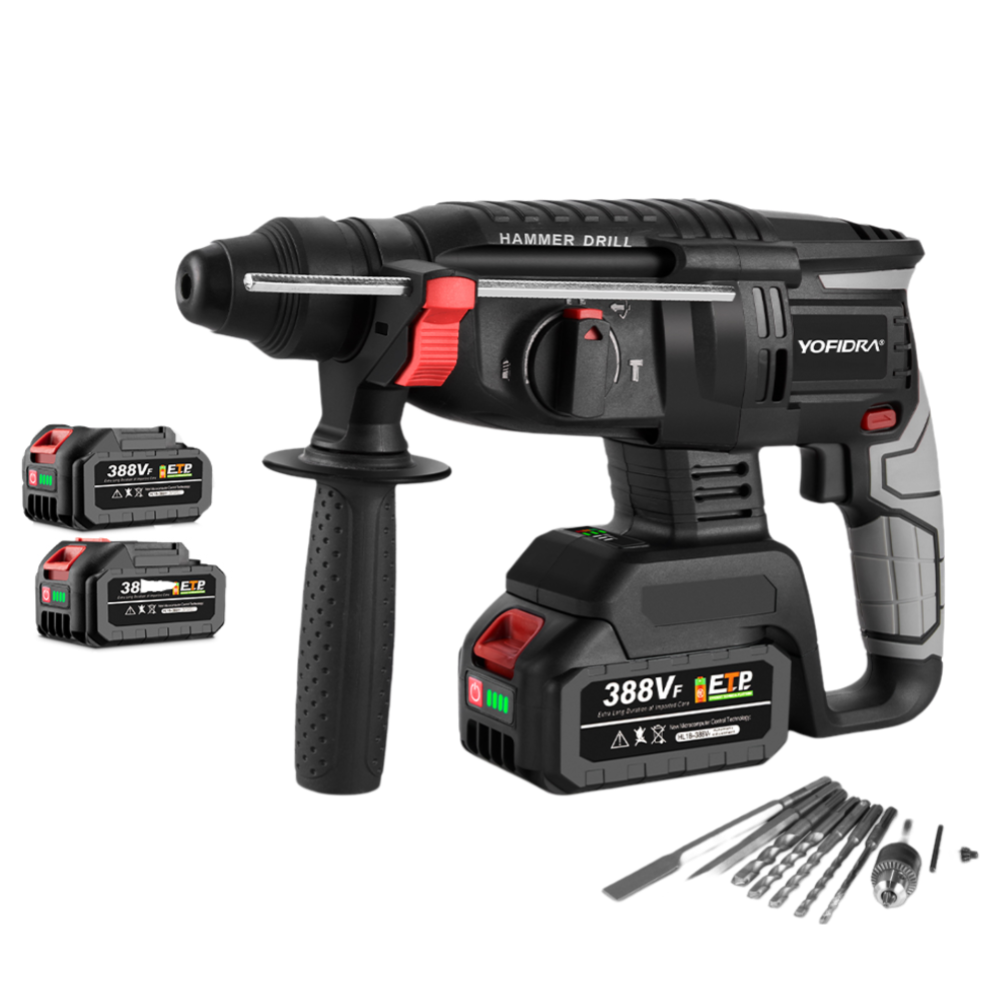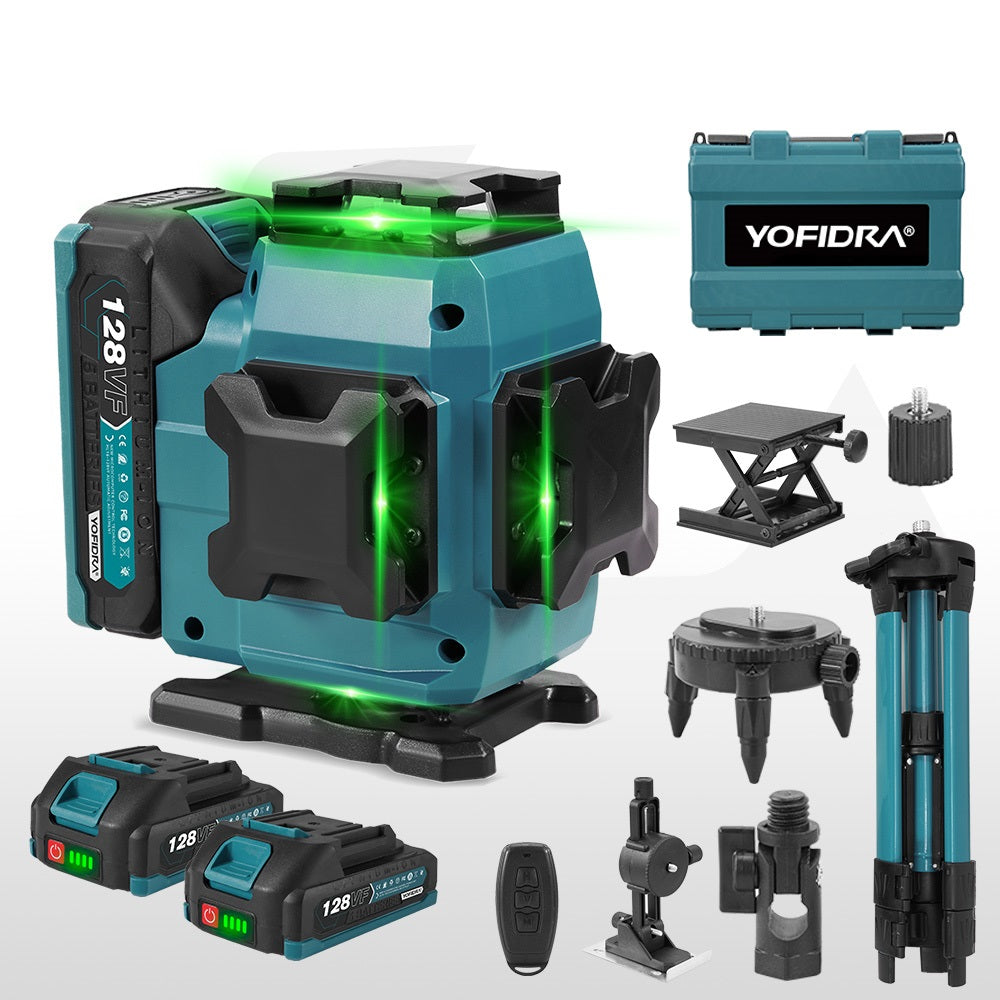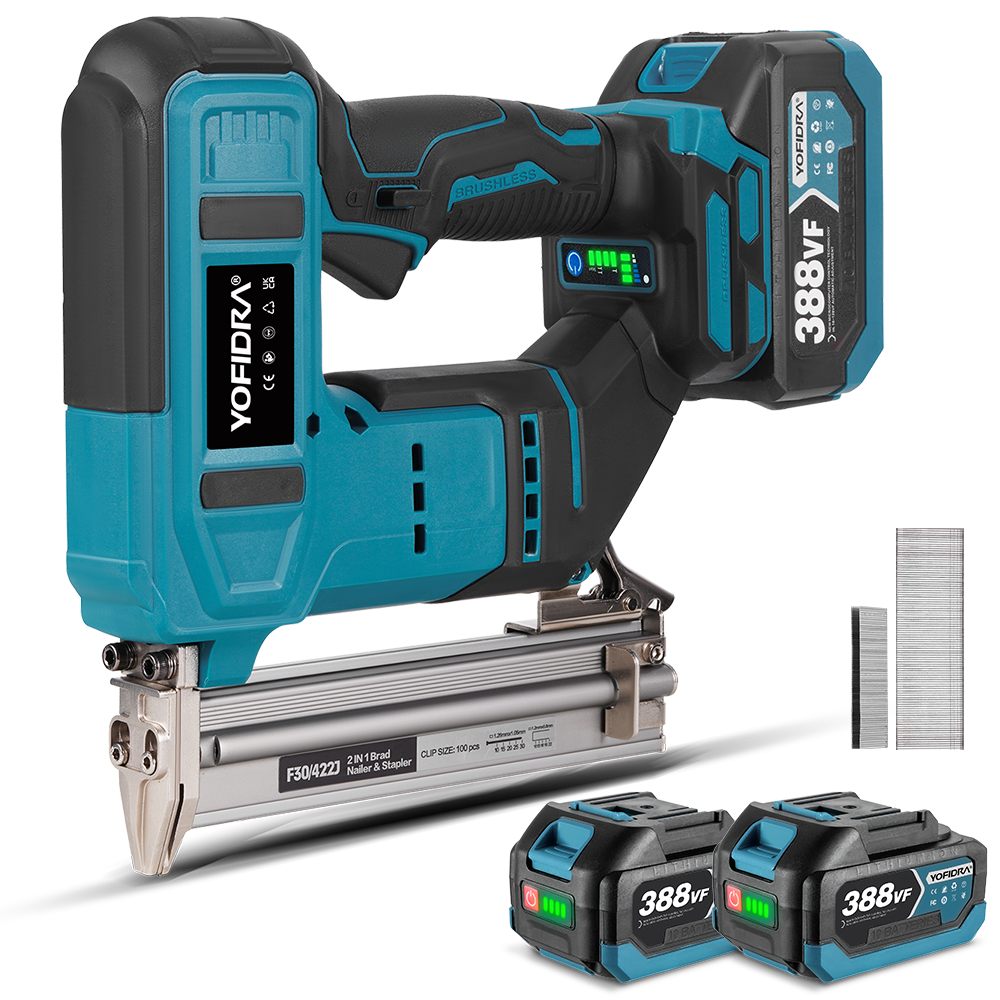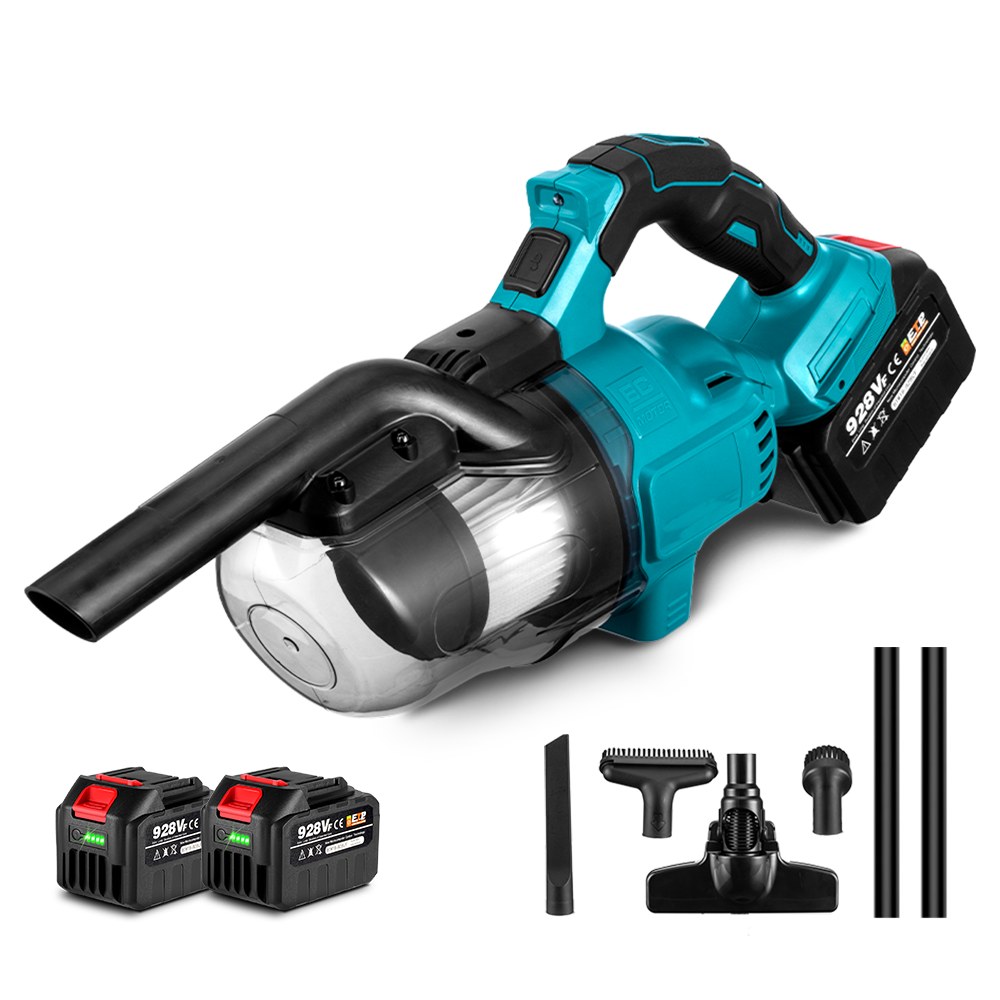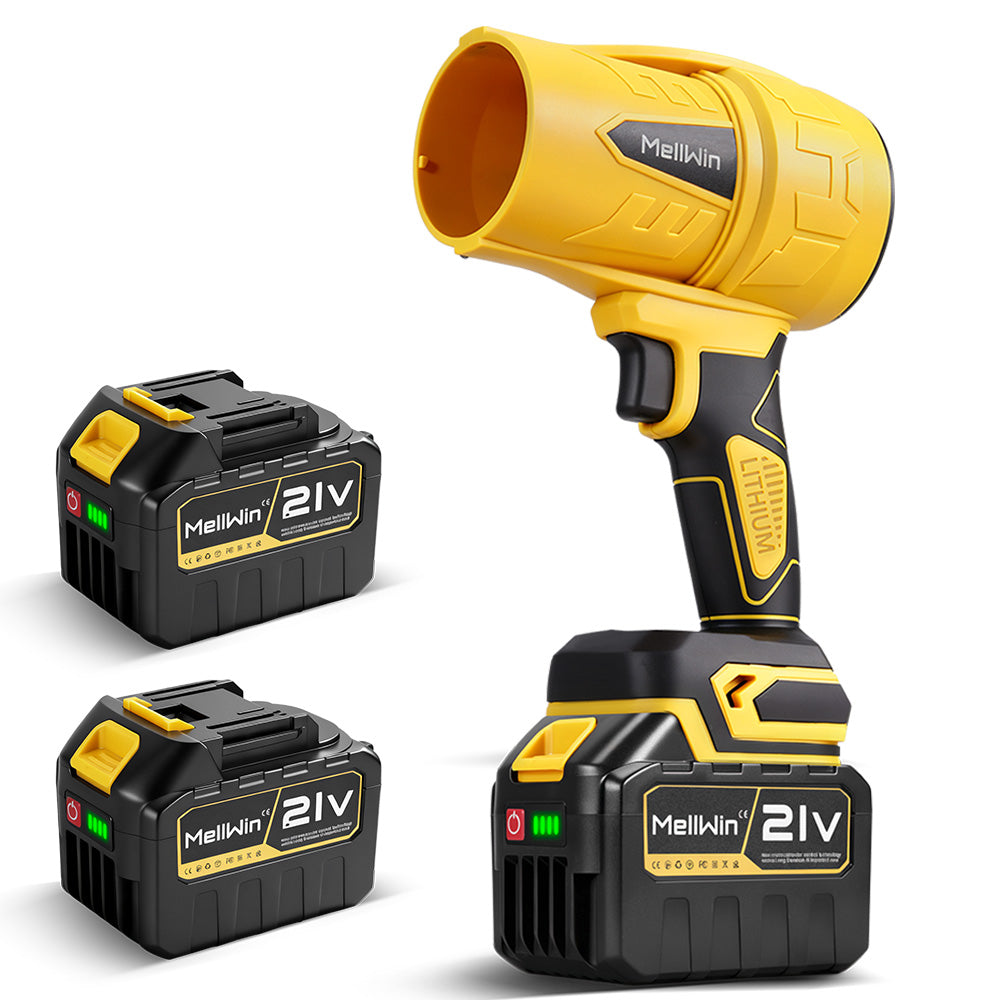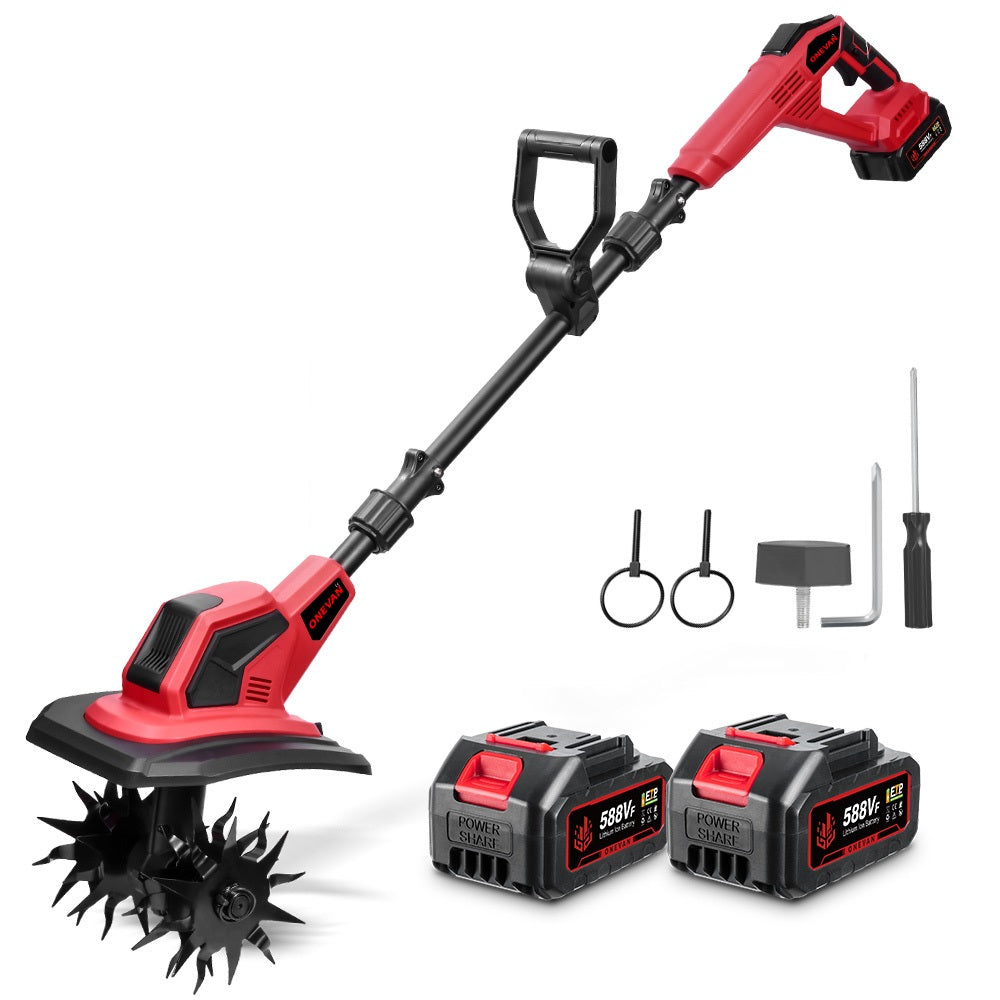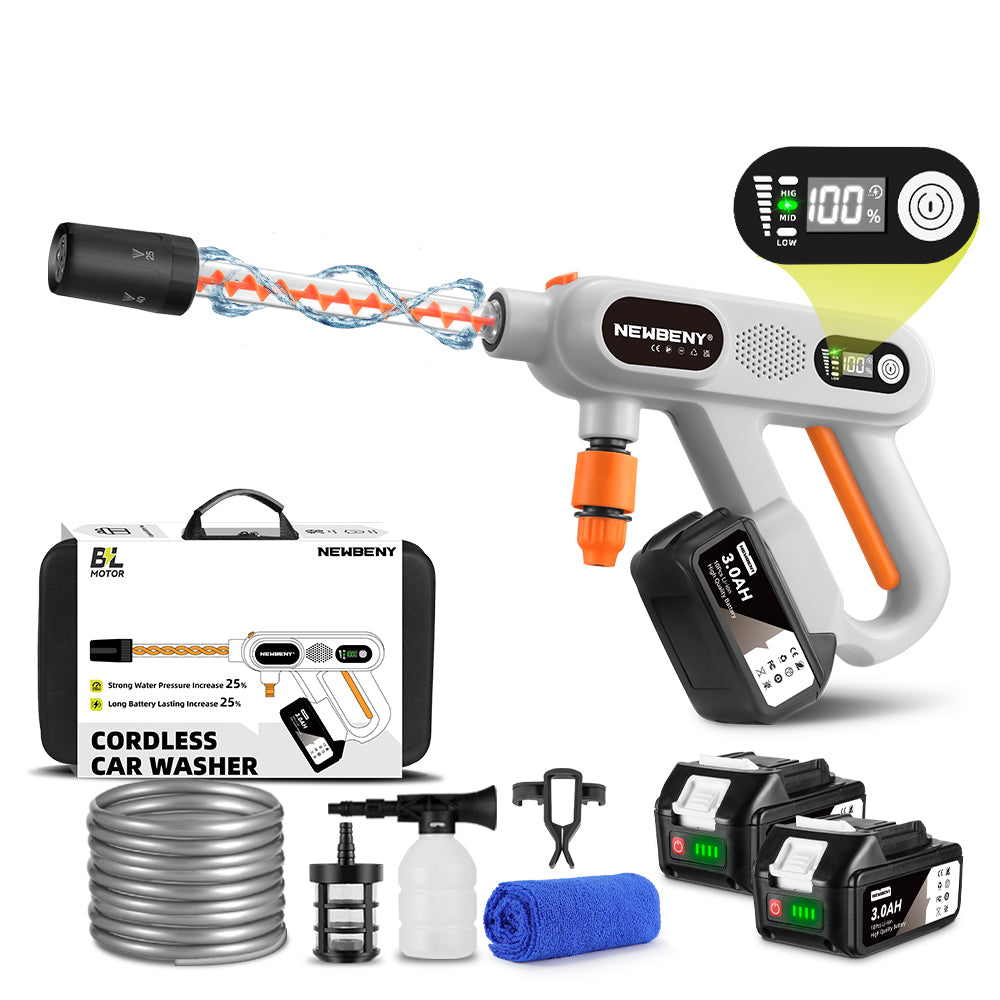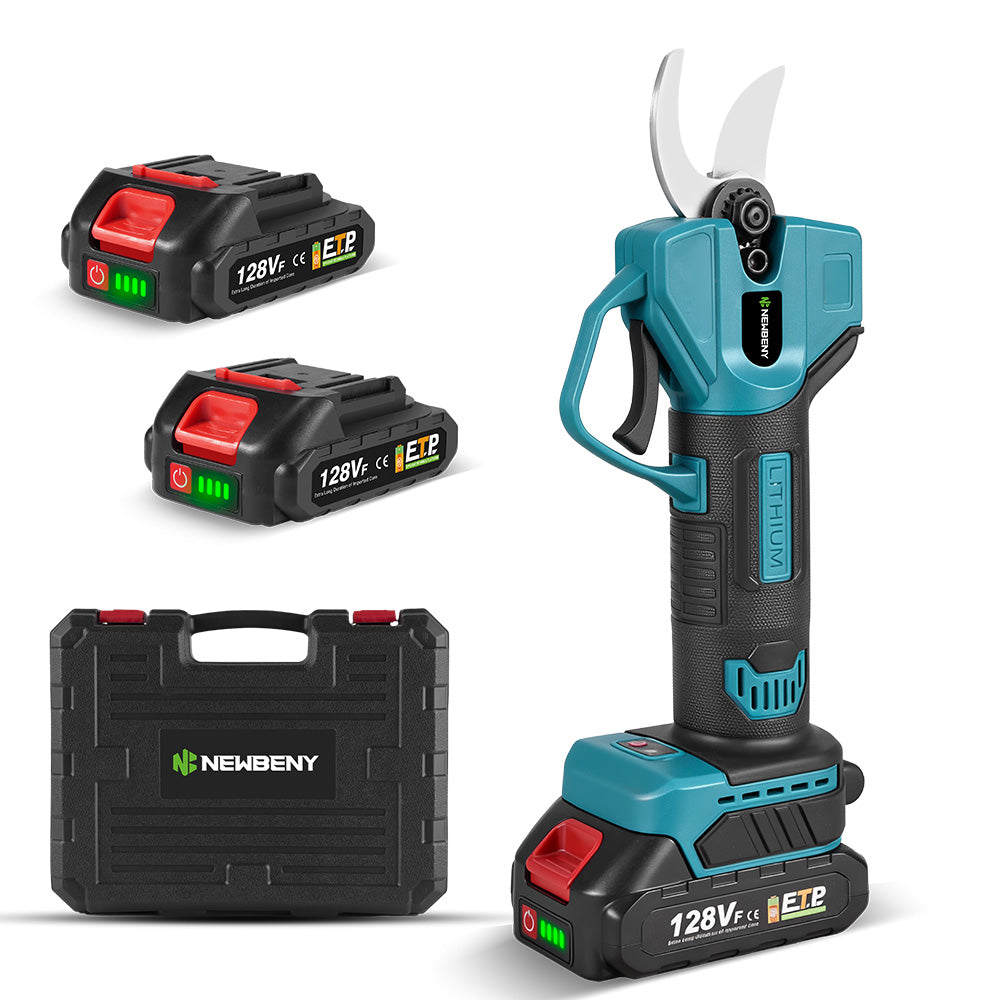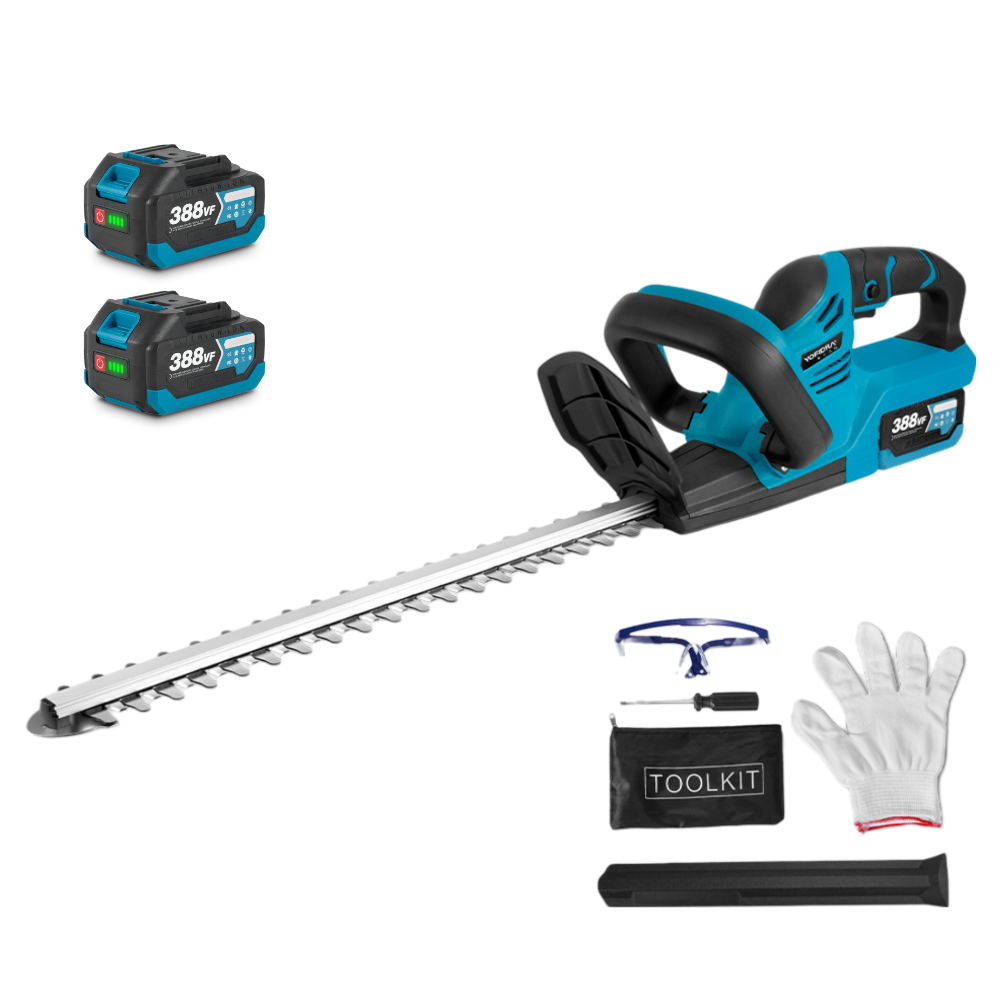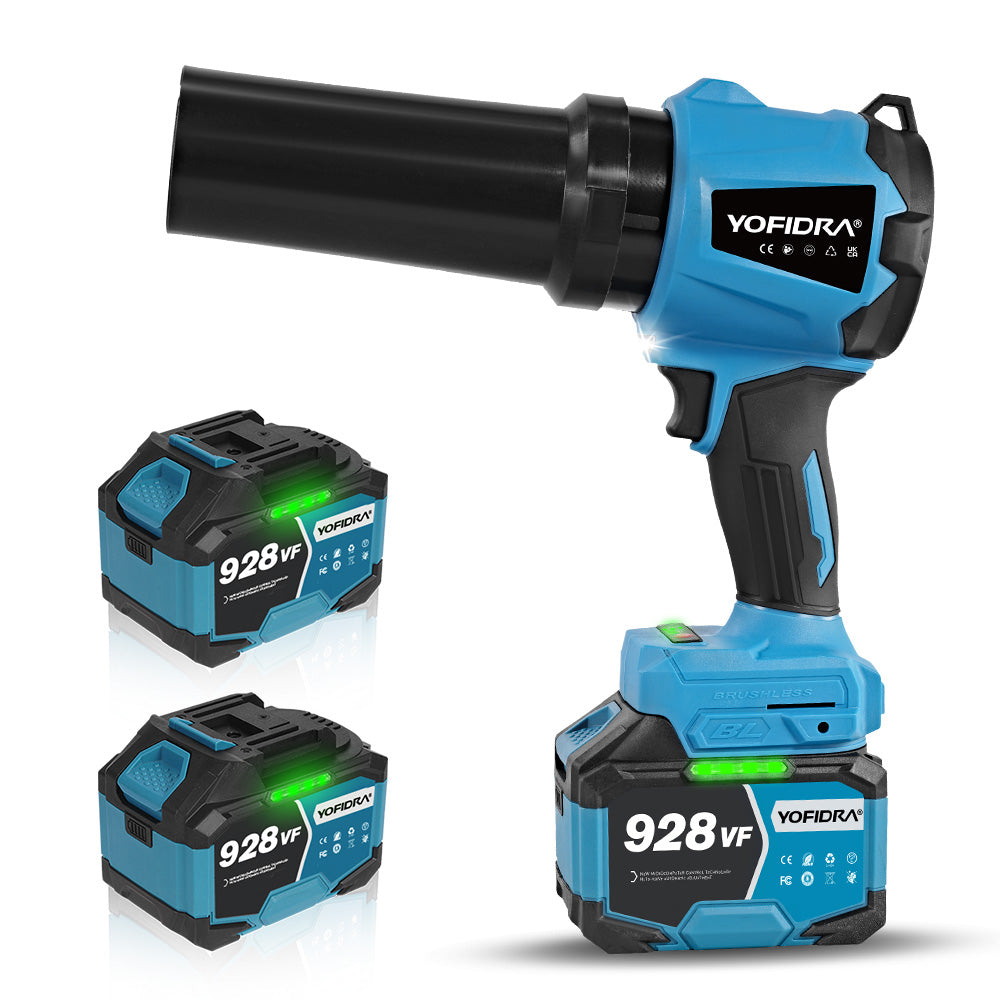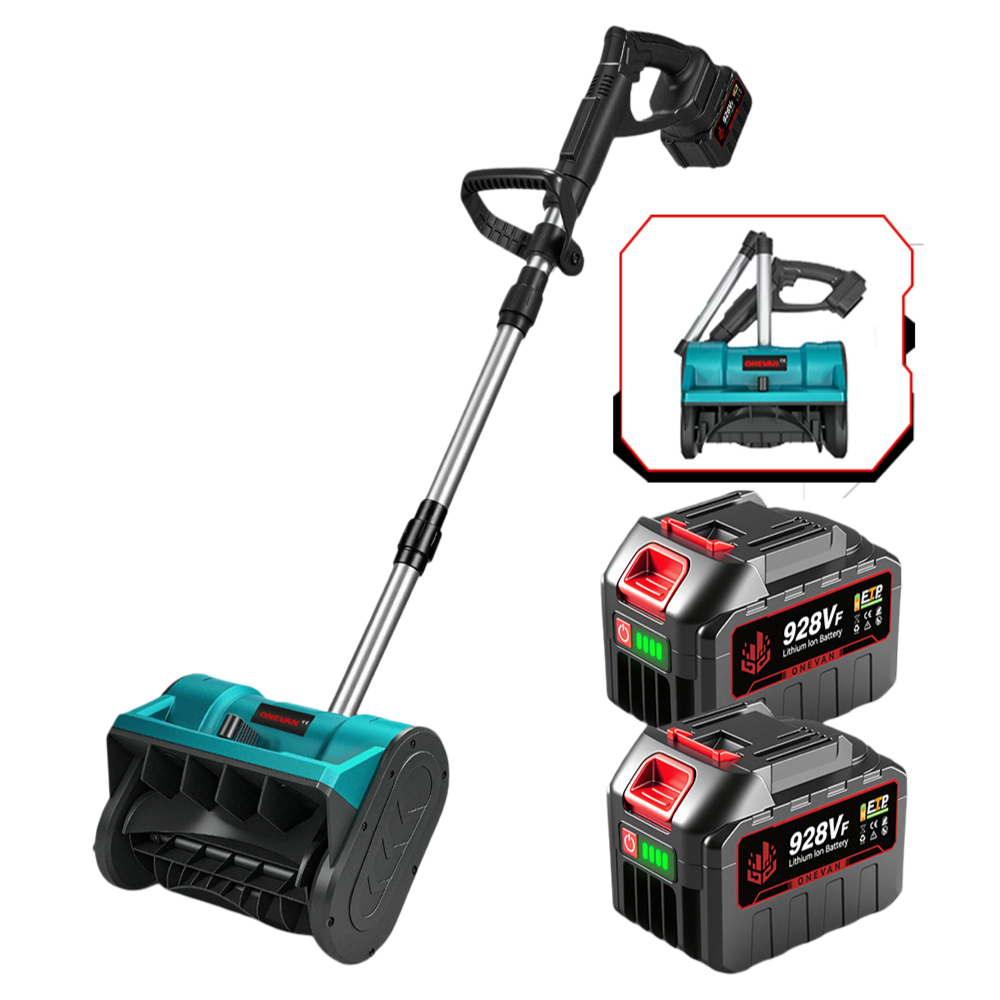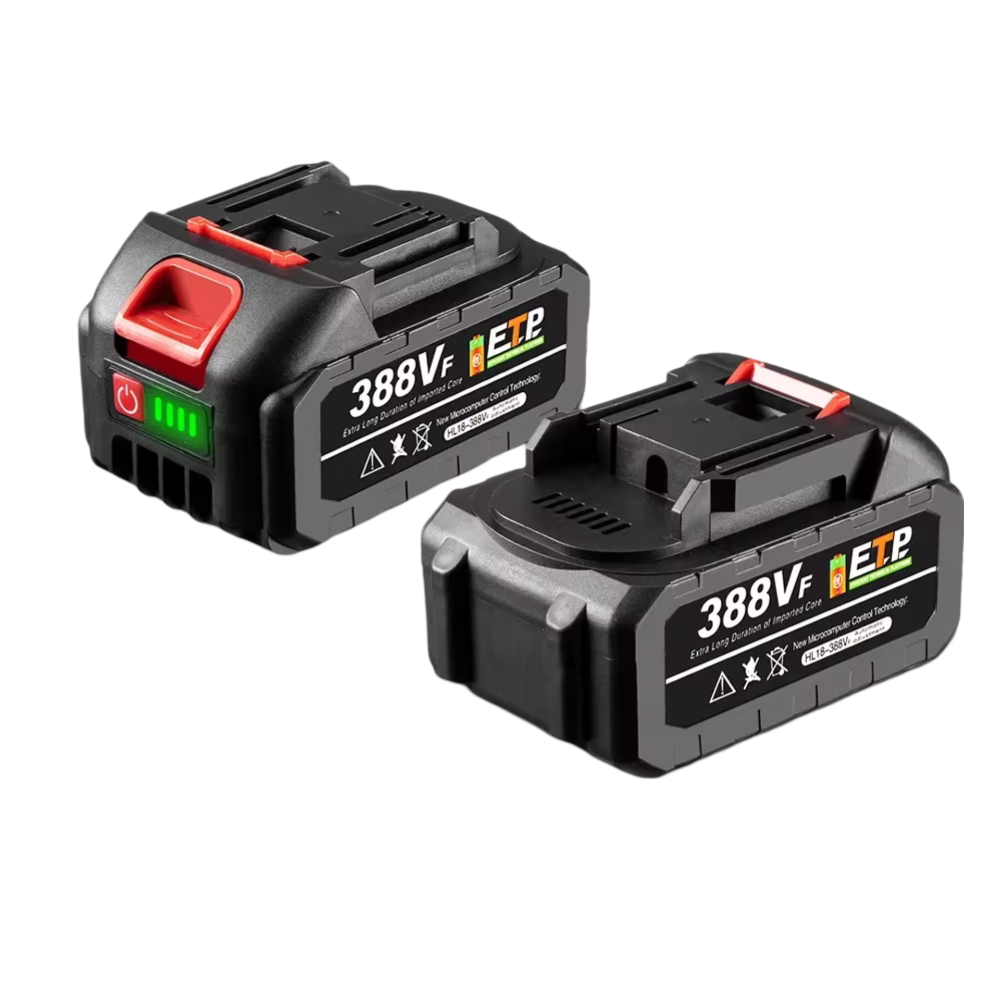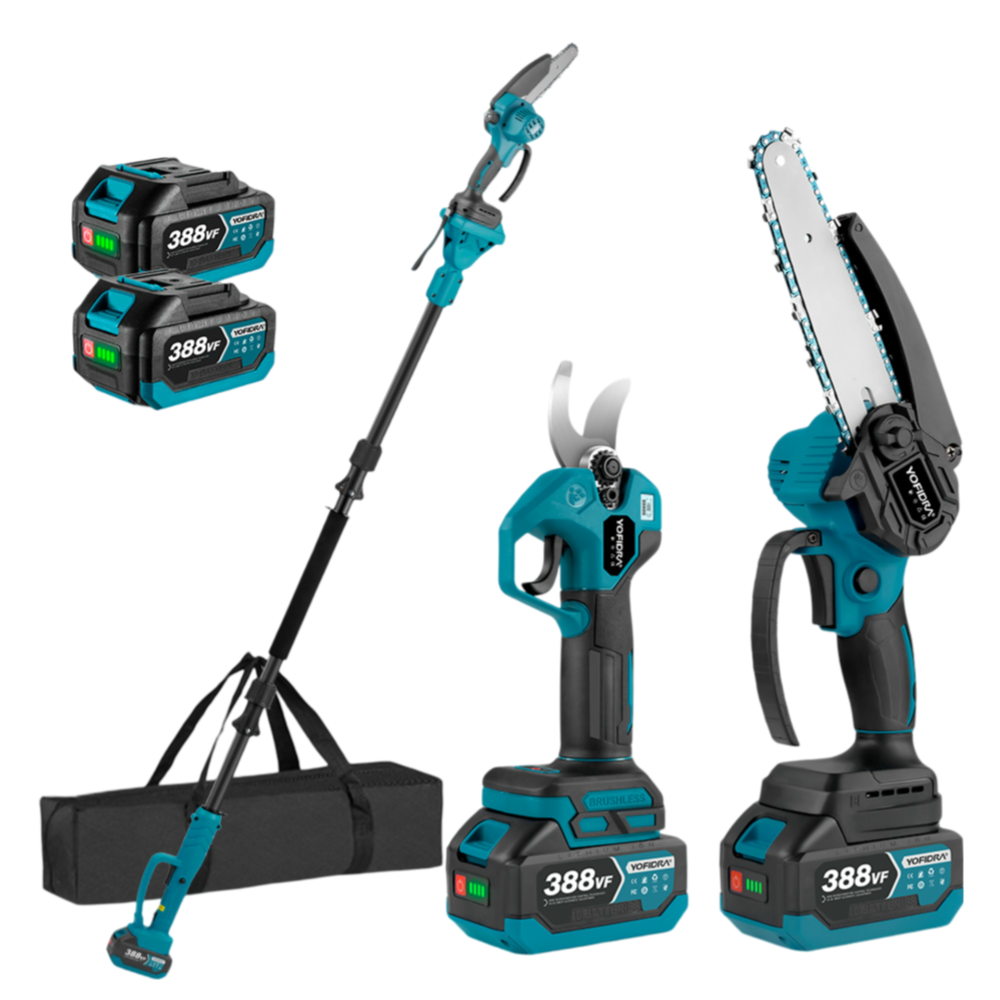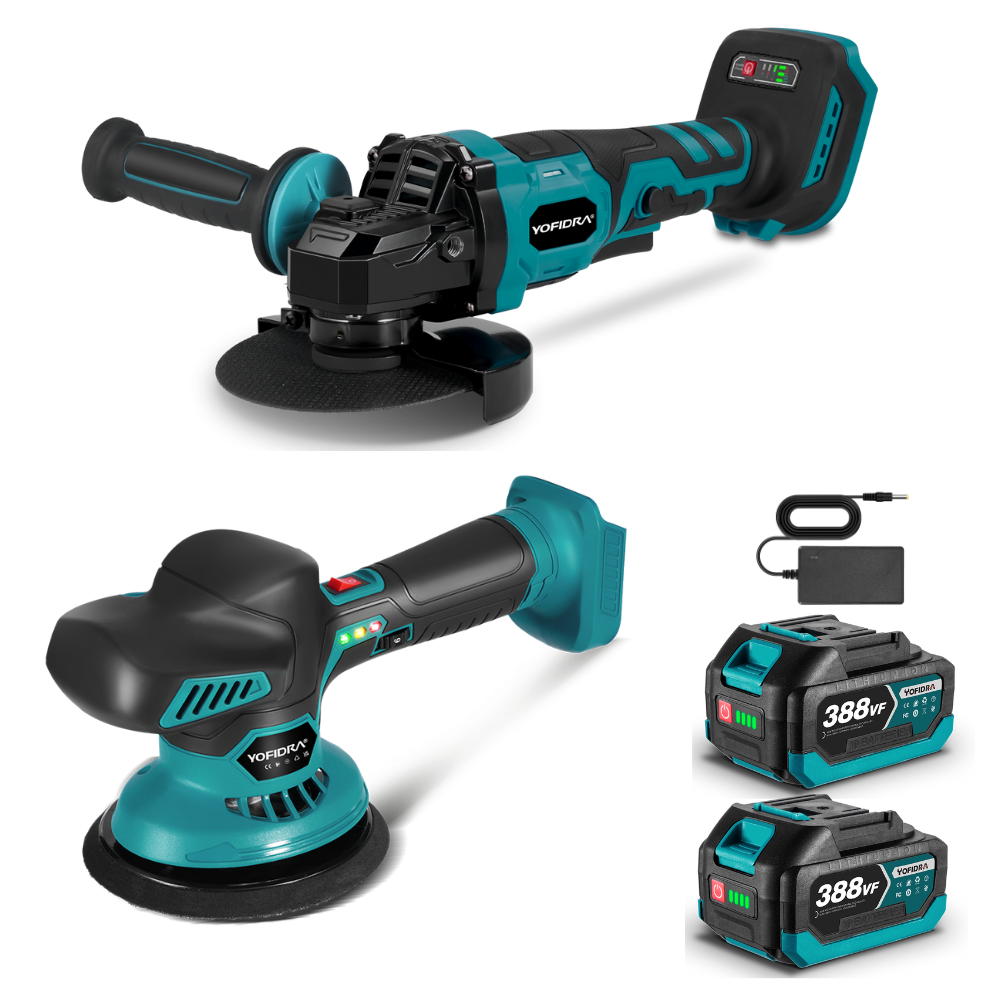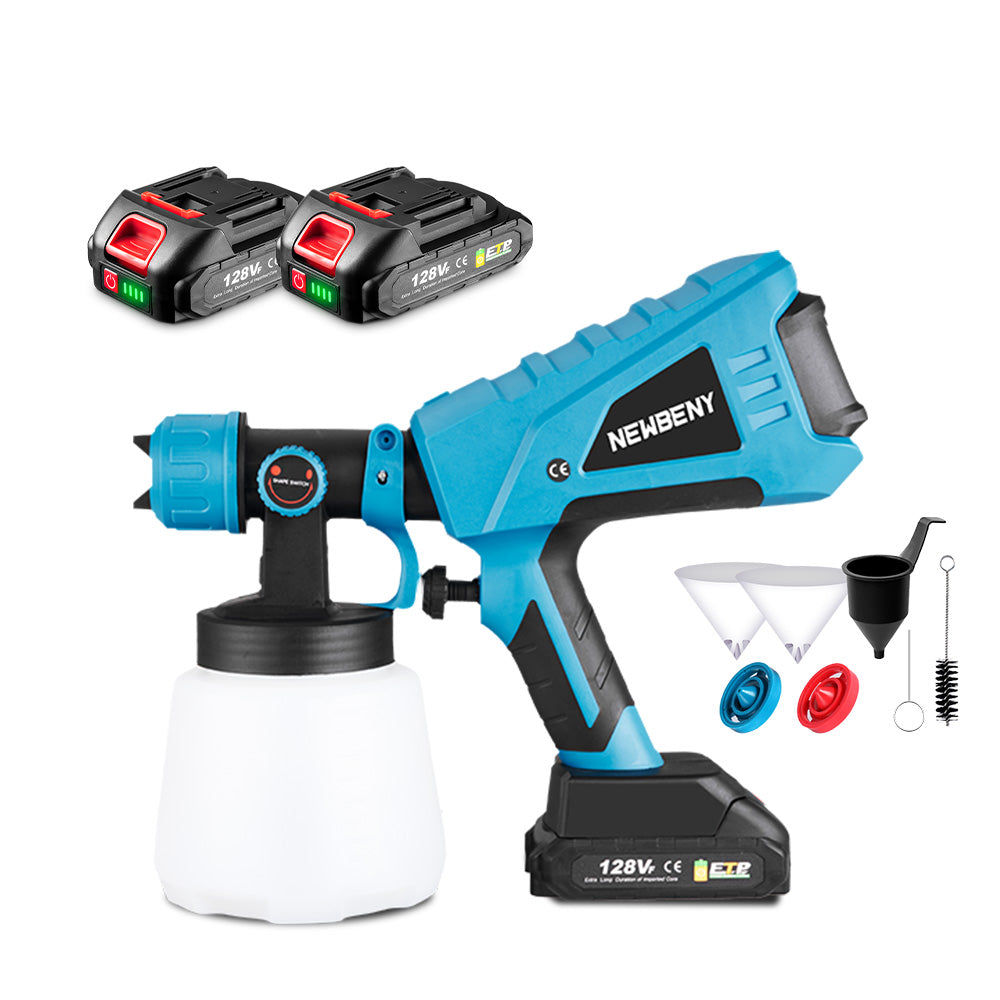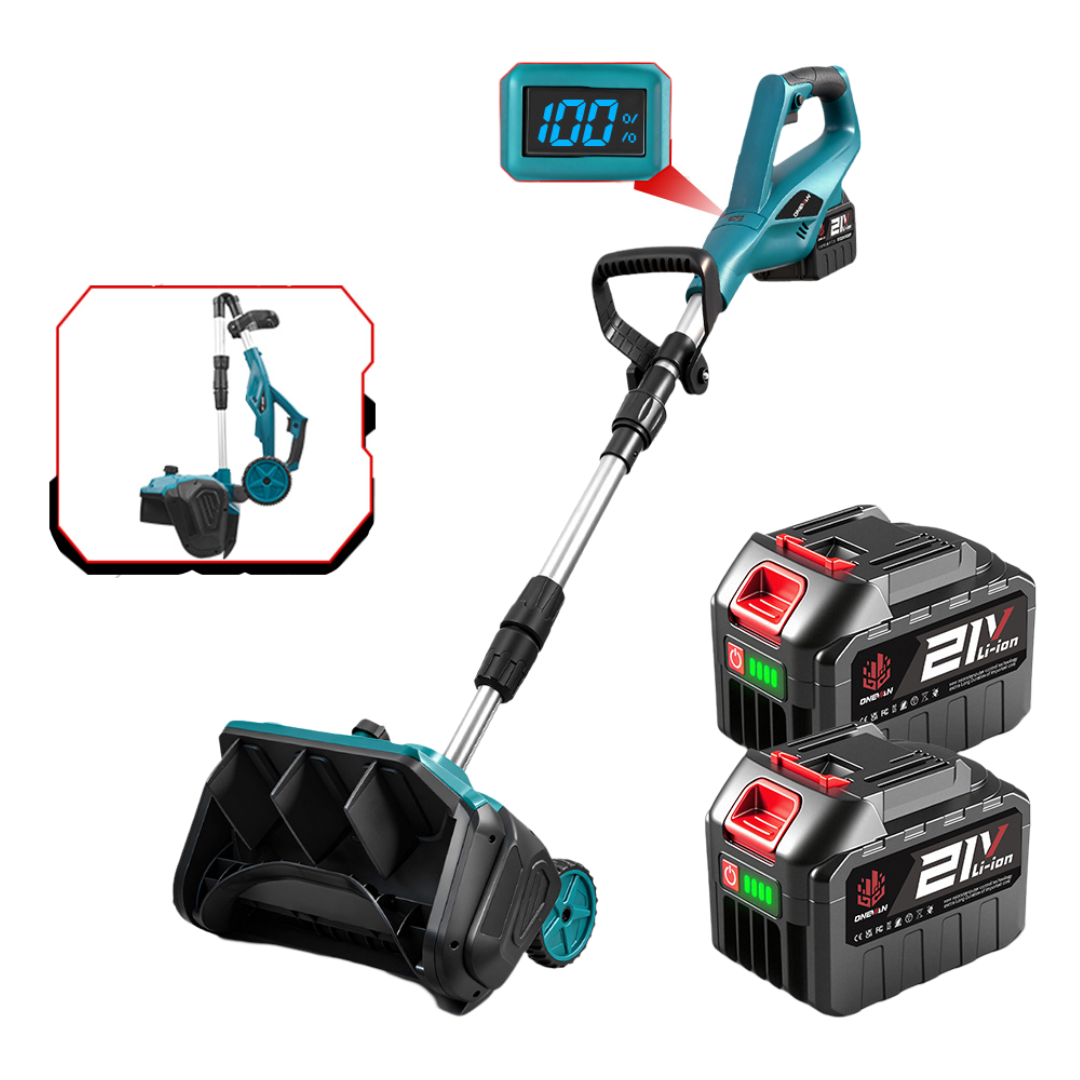Choosing the wrong cordless chainsaw can have serious consequences. Over 37% of DIY injuries involve improper tool selection, with many people using tools that are either too powerful or too weak to complete their tasks. For example, using the wrong chainsaw size can lead to dangerous kickbacks or loss of control.
Simultaneously, the cordless tools market is experiencing remarkable growth. With a projected 8.2% CAGR growth in 2025, manufacturers are investing heavily in battery technology and safety features. There's never been a better time to buy a cordless chainsaw.
1. Identify Your Needs Before Buying a Cordless Chainsaw
What are your cutting needs? This is the first question you will face when choosing the right cordless chainsaw. Here are further questions:
- The size of branches you'll cut
- How often you'll use it
- and your comfort level with power tools
These all affect which model will work best for you. Before spending money on features you won't use, take time to match your requirements with the right tool.
Usage Scenarios
Light Pruning (6" Guide Bar)
For small yard maintenance and light pruning tasks, a compact 6-inch chainsaw provides the perfect balance between power and control. These smaller models will give you impeccable results in the following tasks:
- Trimming thin branches
- Shaping bushes
- And handling basic garden maintenance.
This easy-to-use cordless chainsaw for beginners offers excellent maneuverability in tight spaces. The Newbeny 6-inch Cordless Chainsaw fits this category perfectly. Its high-quality alloy chain cuts smoothly without clogging, making quick work of small branches. The soft, non-slip rubber handle absorbs sweat for comfortable extended use. What makes this model the best small chainsaw for home use is its complete kit - you get two extra chains, safety gear (goggles and gloves), two batteries, and a charger. With its 21V power and 11,000 RPM speed, this compact 6-inch design handles small to medium tasks efficiently while remaining easy to control.
Storm Cleanup (8-10" Guide Bar)
After storms, yards often need significant cleanup of fallen branches and small trees. This requires more cutting power than light pruning, but it still demands maneuverability. In this case, how to choose a chainsaw for storm cleanup? An 8-10-inch chainsaw provides the ideal balance for storm cleanup tasks.
The Newbeny 8-inch Cordless Chainsaw operates with top-level performance in these specific tasks. The device possesses a 3500W brushless that achieves 40,000 RPM and enables vigorous branch cutting for diameters up to 12 cm. You can monitor your battery power supply through the digital battery display, which helps prevent interruptions during vital cleanup activities.
The model comes equipped with valuable extras, including an additional guide plate and chain to extend its operational lifetime. Storage and transportation become convenient because this product comes with an integrated plastic carrying case. The cordless setup lets you operate without cords in any area of your property, regardless of power source distance.
Cutting Firewood (12 Inches or Above)
For serious firewood cutting, you need a larger chainsaw with substantial power. Cutting through logs consistently requires a longer guide bar and a more robust motor to prevent bogging down during extended use.
The Newbeny 12-inch Cordless Chainsaw handles these demanding tasks effectively. Its high-powered brushless motor delivers consistent cutting power while the automatic oiling system keeps the chain lubricated for smoother operation. The premium alloy chain cuts through wood with minimal jamming.
The tool's bigger size does not compromise comfort, as it features a soft rubber handle for extended cutting sessions. Safety elements include an enlarged baffle to block flying objects and heat dissipation holes that prevent overheating. The heavy-duty utility tool excels at demanding tasks ranging from forest tree cutting to cutting large branches.
Critical Notes
Using chainsaws that have bars longer than 16 inches significantly increases the risk of kickback, which can cause dangerous accidents, especially for less experienced users. Kickback happens when the guide bar tip contacts an object or when the wood closes in and pinches the chain. Longer bars make these situations more likely and more dangerous.
If you plan to use your chainsaw less than twice per month, focus on affordability rather than premium features. Occasional users won't benefit enough from advanced options to justify their higher cost. Basic models provide adequate performance for infrequent use while saving money that could be better spent elsewhere in your tool collection.
2. Things To Note When Buying a Home Use Chainsaw
There are certain points a person should remember before buying a home use chainsaw.
Chainsaw Battery Life Explained
Battery life is one of the most important factors when choosing a chainsaw for home use. In simple words, most cordless chainsaws will run for about 30 minutes on a single charge. This gives you enough time to cut roughly 20 medium-sized branches before you need to recharge the battery.
If you're planning heavier work, such as clearing multiple trees or cutting a lot of firewood, you will need at least two batteries. This is an essential aspect because nothing is more frustrating than having your tool die halfway through a job.
Additionally, consider the charging time. Some batteries take 30 minutes to charge, while others need 2 hours. This point is noticeable for people with limited time for yard work.
Guide Bar Length
Next, understand which guide bar length matches your cutting needs. This is really a matter of matching the tool to the job.
Finger-sized branches (about 1-2 inches thick) need only a 4-6 inch guide bar. These smaller chainsaws are lighter, easier to control, and perfect for pruning small trees or bushes.
Wrist-sized branches (3-5 inches thick) work best with 8-10 inch bars. So, the basic point is that this mid-range size handles most common yard tasks without being too heavy.
Leg-sized branches and small trees (6+ inches thick) require 12 inches or larger guide bars. You will see that these larger chainsaws cut bigger wood faster, but they're heavier and harder to control. It is essential to note that only use larger chainsaws after gaining experience with smaller models.
Safe Chainsaw Features Checklist
In simple words, chainsaw safety features can prevent serious injuries. Two essential features stand out above all others.
First, ensure the chainsaw has a two-hand start switch. This switch prevents accidental starts by requiring both hands to activate the saw. This simple feature prevents many common accidents.
Second, check for an emergency brake with less than 1 second response time. So, if the chainsaw kicks back (suddenly jumps toward you), the brake stops the chain almost instantly. This point is important as it can literally save your fingers or worse.
Another important factor to consider, especially for home use, is the noise levels of cordless versus gas chainsaws. The noise levels of gas chainsaws surpass those of cordless chainsaws by a major margin. Homeowners should consider this noise difference crucial because noise restrictions exist in residential areas, and they prefer quiet working environments.
Simultaneously, consider additional safety features like anti-vibration handles and chain catchers. These make the tool both safer and more comfortable to use over longer periods.
3. Store Testing Checklist Before Buying a Cordless Chainsaws
How to test chainsaw in store? Below are different methods to check cordless chainsaws before buying.
Comfort Test
When you're at the store looking at chainsaws, don't just look; actually pick them up and feel them. In simple words, a chainsaw that's too heavy will wear you out quickly and might be unsafe.
Here's a simple test: hold the chainsaw with one hand while you're talking to the salesperson. For instance, if your arm gets shaky or tired during a short conversation, the chainsaw is probably too heavy for extended use.
This section will address the chainsaw vibration comparison guide. Place the running chainsaw (without the chain moving) on the counter. For instance, if the tool moves itself across the surface, it has excessive vibration. Consequently, high vibration will tire your hands faster and make precise cuts harder.
Simultaneously, test the grip comfort. Your hand should wrap naturally around the handle without stretching. This is important because an uncomfortable grip leads to hand fatigue and potential accidents.
Noise Comparison
You will observe that cordless chainsaws are generally quieter than gas models, but noise levels still vary between brands and models.
For acceptable noise levels, purchase cordless chainsaws that are quieter than traditional vacuum cleaners. This is crucial if you have nearby neighbors or plan to work early mornings or evenings.
Excellent models produce sound comparable to hair dryers. So, you can have a normal conversation while standing a few feet away from the running saw.
For instance - lower noise means less hearing protection needed and less neighborhood disturbance. Furthermore, some communities have noise ordinances that restrict the use of loud power equipment.

4. Cordless Chainsaw Budget Recommendations
When shopping for a cordless chainsaw, your budget will determine what features you can get. For example, spending more usually gets you better battery life, more power, and extra features.
Price Range
|
Price Range |
Best For |
Must-Have Features |
|
$50-100 |
Occasional users |
Replaceable chains |
|
$100-200 |
Regular users |
Built-in LED light |
|
$200+ |
Frequent users |
Detachable battery system |
Generally, the $50-100 range works well for people who only need a chainsaw a few times a year. These models handle basic pruning and minor storm cleanup. However, even budget models should have replaceable chains, as chains dull over time.
The next thing is the $100-200 range. These chainsaws offer a better balance between price and performance for regular users. These cordless chainsaws include helpful features like LED lights to illuminate your cutting area, which is especially useful in shaded spots or during evening cleanup.
If you use your chainsaw regularly, the middle price range often provides the best value.
Simultaneously, the $200+ range delivers premium features for frequent users. These models come with detachable battery systems that let you swap batteries quickly, extending your working time. Higher-end models typically offer longer warranties and better customer support.
Newbeny products are being affordable while maintaining functionality. Our chainsaws are cheap yet fully functional and cost-effective. Even the largest 16-inch cordless chainsaw costs less than $100, making it an excellent option for budget-conscious buyers who still need serious cutting power.
5. Maintenance of Cordless Chainsaw
After Each Use
Taking care of your chainsaw after each use helps it last longer. So, the basic point is that a little maintenance goes a long way.
Clean all sawdust off your chainsaw with an old toothbrush. Sawdust holds moisture against metal parts and can cause rust. In addition, sawdust can also clog the oil ports and prevent proper chain lubrication.
It is a good practice to apply a light coat of cooking oil to the chain and bar. Furthermore, regular cooking oil works fine as a temporary rust preventer between uses. Simultaneously, wipe down the plastic body to remove sap and dirt that can make the saw slippery to hold.
Winter Storage
Proper winter storage prevents damage during the off-season. In simple words, taking a few extra steps before putting your chainsaw away for winter will save you headaches in spring.
You will see that batteries need special attention. Store the battery separately from the chainsaw, ideally at about 40-60% charge. The reason is that extreme cold can permanently damage lithium-ion batteries.
Keep your chainsaw in a dry closet instead of basements or garages. Also, remember that humidity and temperature swings in basements can cause condensation inside the tool's motor. Generally, moisture damage isn't typically covered under warranty.
6. Safe Use of Chain Saws
Every piece of equipment requires some safety precautions. The same is the case with a cordless chainsaw. Although these tools are very safe to use, you have to follow some protocols.
Mandatory Protocols
Safety must come first when using any chainsaw. You should understand that following these protocols isn't just recommended; it's essential for preventing serious injuries.
Battery modification is absolutely prohibited. This point is important - 68% of chainsaw-related fire incidents can be traced to unauthorized battery alterations. Simultaneously, using non-manufacturer-approved batteries can void your warranty and create dangerous situations.
For safety, chainsaws with 12-inch bars or larger require ANSI Z87.1-rated eyewear. Because standard sunglasses don't provide adequate protection from flying wood chips. If a user wears proper safety glasses, they need to be impact-resistant and wrap around the sides of their eyes.
7. Conclusion
Cordless chainsaws make yard work easier when you choose the right one for your needs. If you have education about battery life, guide bar sizes, and safety features, it helps you make a smart purchase. Taking time to test different models in the store helps ensure you get a chainsaw that feels comfortable for your size and strength.
In conclusion, proper maintenance keeps your chainsaw working well for years. Simultaneously, following safety protocols protects you from the most common chainsaw-related injuries.
8. FAQs
Is a cordless chainsaw right for ladies?
They’re lighter than gas models and vibrate less. The smaller models (6-8 inch) are generally designed to be lightweight and easy to work with for everyone.
Is it possible to charge the chainsaw battery using solar panels?
Solar-powered charging of a chainsaw battery is possible if you use the correct adapter. You will require a solar setup that suits the voltage of your battery. Just remember that it will be slower than with standard outlets.
How long does cordless chainsaw chain sharpening last?
When properly sharpened, a chainsaw chain can last for 3-6 hours of actual cutting time. How long this is ultimately depends on what you’re cutting. Clean wood won’t dull your chain quite as much as dirty wood or wood with nails in it.
Is it OK to use regular motor oil for cordless chainsaw maintenance?
No, do not use standard motor oil in your chainsaw. Bar and chain oil is specially designed to cling to the chain and help prevent wear. Vegetable oil should work temporarily, but proper bar oil should be used quickly.
Can cordless chainsaws cut frozen wood?
Cordless chainsaws can indeed cut frozen wood, but it’s much tougher on the chain and the battery. Frozen wood is tougher to cut and dulls chains faster. Use a sharper chain or try to allow the wood to thaw, if possible.
Are Cordless Chainsaw Batteries Compatible?
Batteries typically only work with their make and voltage. Some brands have universal compatibility across their tool lines. Always confirm with manufacturer specs before purchasing extra batteries.
How to transport cordless chainsaw in car safely?
Remove the battery and put on the bar cover. Lay the chainsaw flat in your trunk to prevent oil leaks. Secure it so it doesn't slide around. Keep the battery in a cool place, not in direct sunlight.










